
Rick Dangerous is a platform game developed by Core Design for the Acorn Archimedes, Amiga, Atari ST, Amstrad CPC, ZX Spectrum, Commodore 64, and MS-DOS. The game was released in 1989 and published by MicroProse on the Firebird Software label in the UK, and on the MicroPlay label in America. It was also published in Spain by Erbe Software. Later, it was released with two other games, Stunt Car Racer and MicroProse Soccer, on the Commodore 64 Powerplay 64 cartridge. The game was followed by a sequel, Rick Dangerous 2, in 1990. Loosely based on the Indiana Jones film franchise, the game received mixed reviews from critics.

Zool 2 is a side-scrolling platform video game originally developed by The Warp Factory and published by Gremlin Graphics for the Amiga in November 1993. It is the sequel to the original Zool, which was released earlier in 1992 on various platforms.

Pinball Fantasies is a 1992 pinball video game originally developed by Digital Illusions and published by 21st Century Entertainment in Europe for the Amiga home computers. It is the sequel to Pinball Dreams, which was released earlier in the same year on multiple platforms. In the game, players can choose between any of the four available playfields, both of which have their own thematic and main objectives in order to obtain the highest score possible.

Soccer Kid is a 1993 side-scrolling platform game developed and published by Krisalis Software in Europe for the Amiga. The player assumes the role of the titular main protagonist who travels across several countries around the world to repair the World Cup by retrieving pieces that were scattered by the alien pirate Scab, the main antagonist who failed to steal and add it to his trophy collection in a robbery attempt. Its gameplay mainly consists of platforming and exploration elements, with a main single-button or two-button configuration, depending on the controls setup.
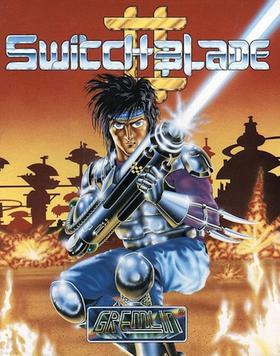
Switchblade II is a 1991 side-scrolling action-platform run and gun video game originally developed and published by Gremlin Graphics in Europe for the Amiga home computers. It is the sequel to the original Switchblade, which was solely created by Simon Phipps at Core Design and released earlier in 1989 across multiple platforms. Despite being primarily developed in the UK, its graphics had a distinctly Japanese style similar to anime or manga.

Monster Business is a 1991 vertically scrolling platform game developed by Eclipse Software Design and published by Ascon that was released for the Amiga and Atari ST.
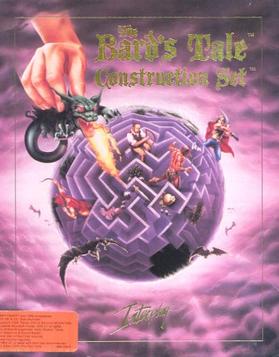
The Bard's Tale Construction Set is a computer game creation system that allows for the creation of dungeon crawl video games based on the Bard's Tale game engine. It was developed by Interplay Productions in 1991 and distributed by Electronic Arts. It was released for the Amiga and MS-DOS.
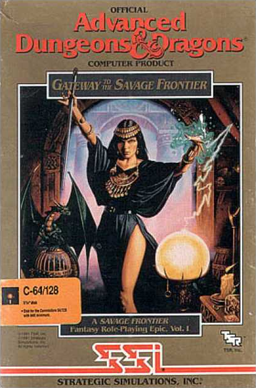
Gateway to the Savage Frontier (1991) is a Gold BoxDungeons & Dragons computer game developed by Beyond Software and published by SSI for the Commodore 64, PC and Amiga personal computers.

The Immortal is an isometric action-adventure game originally created by Will Harvey and released by Electronic Arts in 1990 for the Apple IIGS. It was soon ported to the Amiga, Atari ST, DOS, Nintendo Entertainment System, and Genesis. A wizard is attempting to find his mentor in a large and dangerous labyrinth. It has a high degree of graphic violence. In 2020, the NES port was re-released on the Nintendo Switch Online service, while the Genesis port was re-released on the Piko Collection Collection 1 cartridge for the Evercade.
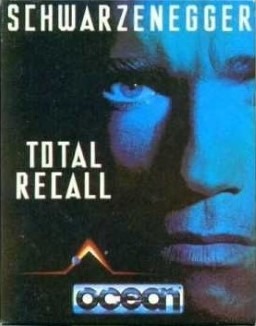
Total Recall is a 1990 platform game developed and published by Ocean Software that was released for the Commodore 64, Amiga, Amstrad CPC, ZX Spectrum, Atari ST, and Nintendo Entertainment System. Total Recall is based on the 1990 film of the same name.

Bomberman is an action-maze video game originally developed and published by Hudson Soft for the PC Engine in Japan on 7 December 1990 and later in North America for the TurboGrafx-16 by NEC in 1991. Belonging to the Bomberman franchise, it is a re-imagining of the first game in the series starring White Bomberman on a quest to rescue Lisa, the kidnapped daughter of his inventor Dr. Mitsumori, from the castle of Black Bomberman while defeating evil monsters and villains that work for him. The game was later ported to home computers, each one featuring changes compared to the original version. Conversions for other platforms were in development but never released. The title garnered positive reception from critics since its initial release on the PC Engine/TurboGrafx-16 and later on home computers.

Elvira II: The Jaws of Cerberus is the second game in the Elvira series of horror adventure/role-playing video games. It was developed by Horror Soft and published by Accolade in 1992. The game is a sequel to 1990's Elvira: Mistress of the Dark. It was followed by Waxworks, which can be considered its spiritual sequel.
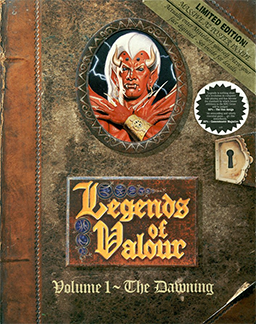
Legends of Valour is a role-playing video game developed by Synthetic Dimensions and released by U.S. Gold and Strategic Simulations in 1992 for the Amiga, Atari ST and MS-DOS, with the additional FM Towns and PC-98 versions in 1993-1994 in Japan only. As the game was planned to be a first part of the series, its full title is Legends of Valour: Volume I – The Dawning. The proposed unreleased sequel to Legends of Valour was to take place in the world outside Mitteldorf, the enclosed city where the entirety of Legends of Valour takes place.

Fun School is a series of educational packages developed and published in the United Kingdom by Europress Software, initially as Database Educational Software. The original Fun School titles were sold mostly by mail order via off-the-page adverts in the magazines owned by Database Publications. A decision was made to create a new set of programs, call the range Fun School 2, and package them more professionally so they could be sold in computer stores around the UK. Every game comes as a set of three versions, each version set to cater for a specific age range.

HeroQuest II: Legacy of Sorasil is an isometric role-playing game that was released on Amiga 1200 and CD32 in 1994 by Gremlin Interactive. The game is the sequel to the 1991 video game HeroQuest, both inspired by the adventure board game Hero Quest from Milton Bradley.

Conqueror is a video game released as the follow-up to Zarch, using the same landscape engine. It is a third-person shooter with strategy elements in which the player controls a fleet of tanks. It was originally developed and released on the Acorn Archimedes by Superior Software in 1988 and ported to other home computers in 1990 by Rainbow Arts. The game was well received, particularly for its blend of strategy and arcade action.

Deliverance is a platform game developed and published by 21st Century Entertainment in 1992 for the Amiga and Atari ST, and in 1993 for Macintosh. It is a remake of the 1990 Hewson Consultants game Deliverance: Stormlord II, featuring new graphics and sound as well as a changed gameplay system and a different plot. A version for the Sega Genesis was planned but never released.

Brutal Sports Football is a 1993 sports video game developed by Teque London and originally published by Millennium Interactive for the Amiga. It was re-published for MS-DOS and Amiga CD32, and later became the first third-party title published for the Atari Jaguar. The first entry in the Brutal Sports series, the game is a fictional style of football played against human or computer-controlled opponents. It features a different take on american football by emphasising the violent aspect of the sport.

Cover Girl Strip Poker, alternately titled Cover Girl Poker, is a 1991 erotic video game based upon five-card strip poker and originally developed and self-published by Emotional Pictures; it was released for the Amiga, DOS, Commodore 64, CDTV, and CD32. Cover Girl Strip Poker is the original Danish title; it was retitled Cover Girl Poker outside of Denmark in the rest of Europe, and the title was subsequently reverted to Cover Girl Strip Poker for the European CDTV and CD-ROM DOS releases. Emotional Pictures was a subsidiary of Danish company InterActive Vision A/S.

Worlds of Legend: Son of the Empire is a 1993 role-playing video game developed and published by Mindscape for the Amiga and MS-DOS. It is a sequel to Legend from 1992.





















